Input Modules
Interfaces
The input interface can have a significant impact on both the sound quality of the DAC, as well as the overall user experience. Input interfaces are constantly changing and are the main reason why digital equipment becomes obsolete. For this reason, we’ve made our inputs standardized modules that are user replaceable. In each module, we individually design each interface to perform at its absolute peak performance, with minimum noise, jitter, and maximum isolation. While each interface can transfer data to DAC, each has its own advantages and disadvantages. The primary difference between each interface is they add different amounts of noise and jitter to the audio system. With each interface,our goal is to have perfectly isolated, bit-perfect, low noise and low jitter data transfer.
MSB input modules are a standardized, swappable design that supports all of our DACs. This allows any module to be moved from one DAC to another for seemless upgradeability. Each module uses a toolless lever lock system for modules that allows simple, quick upgrades and replacements.
Each interface has advantages and disadvantages. Each interface is covered below:
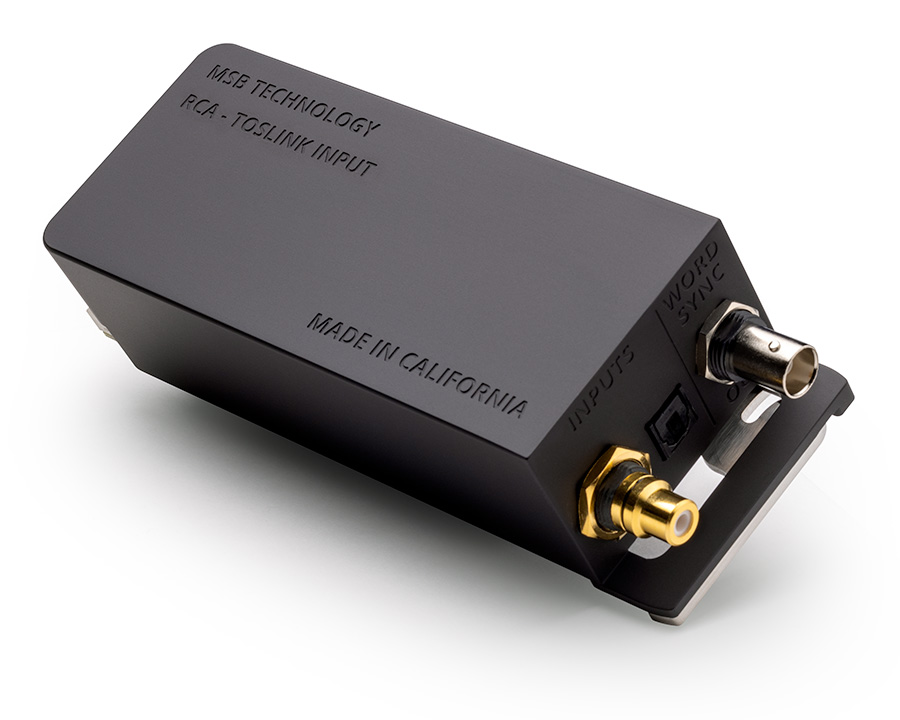
Optical/Coaxial Module (S/Pdif)
This module is our S/PDIF interface modules. Around since the eighties, S/PDIF is the universal interface and is sent over optical, coaxial, or differential cabling. This interface is limited in both sample rate, supported data formats, and bit depth. Toslink, Coaxial, and Balanced digital interfaces are most commonly asynchronous unless a separate clock feedback channel is added to the transport or server. In all of our DACs, we provide the best isolation possible the format allows, helping prevent most electrical noise from coupling from the transport.
Advantages:
-Universal across the industry including consumer market
-Toslink is 100% electrically isolated
-Provides an isolated Word Sync output for clock feedback
Limitations:
-Asynchronous (Unless Word Sync is used )
-Isolation (except for Toslink) is limited
-Medium to High jitter
-No error detection or correction
-Limited to 24/192kHz and 1xDSD via DoP
-Limited to short cable lengths without performance degradation.
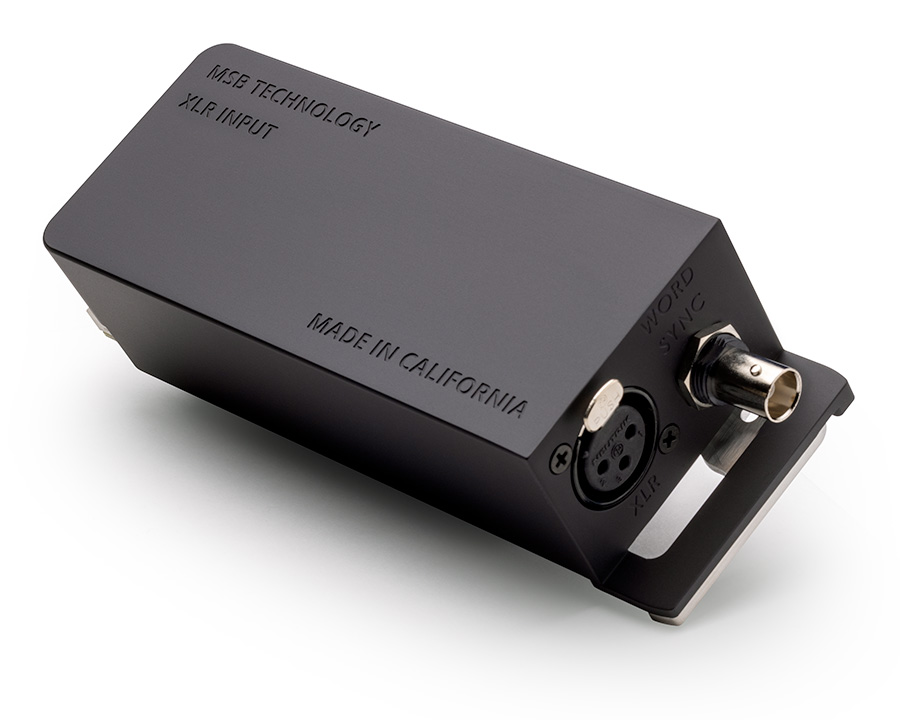
Balanced XLR Module (AES/EBU)
This module is our AES/EBU interface module. This interface is limited in both sample rate, supported data formats, and bit depth. Toslink, Coaxial, and Balanced digital interfaces are most commonly asynchronous unless a separate clock feedback channel is added to the transport or server. In all of our DACs, we provide the best isolation possible the format allows, helping prevent most electrical noise from coupling from the transport.
Advantages:
-Universal across the industry including consumer market
-Provides an isolated Word Sync output for clock feedback
Limitations:
-Asynchronous (Unless Word Sync is used )
-Isolation is limited
-Medium to High jitter
-No error detection or correction
-Limited to 24/192kHz and 1xDSD via DoP
-Limited to short cable lengths without performance degradation.
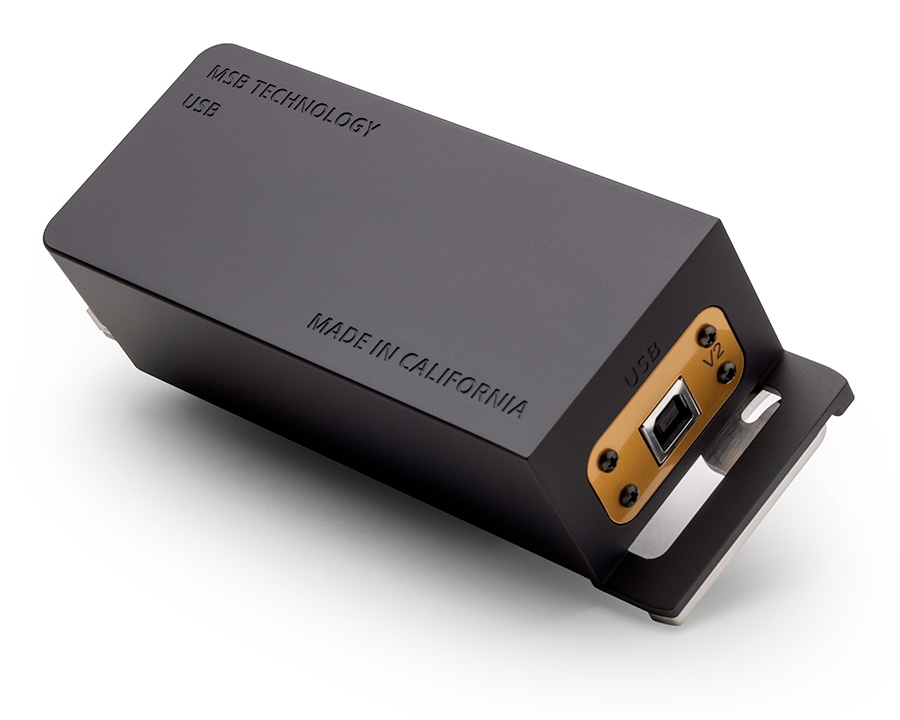
MSB USB Inputs (Not including The Pro USB solution)
Standard USB inputs on DACs are common. What isn’t common is what we do with ours. The entire USB module has a high level of isolation between the USB hardware and the DAC. The USB interface is limited to 384kHz and 4xDSD. Our MQA version also supports full MQA decoding.
Advantages:
-Synchronous to the DAC
-Works with most music server and computer systems that support USB audio
-Works at rates up to 24/768kHz* and 8xDSD*
*Version 2 USB
Limitations:
-Limited level of isolation between the DAC and the often extremely noisy source
-Offers no software control of the DAC from the host source (Volume, etc…)
-Limited to short cable lengths
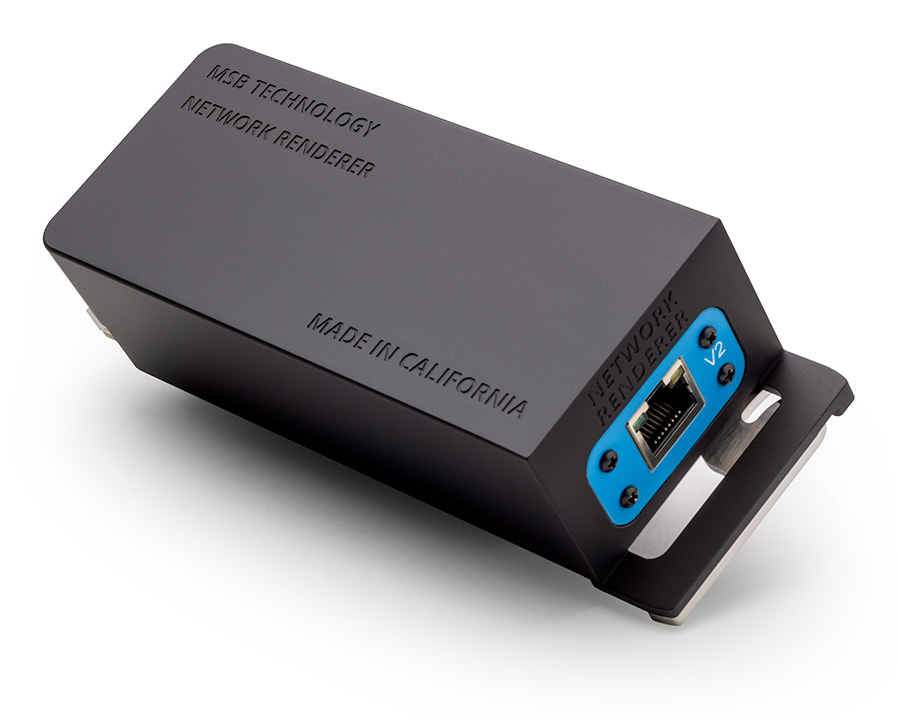
The MSB Network Renderer V2
There are many renderer interfaces in the industry. We designed and developed our own processing card and software with performance and low noise in mind. Our Renderer V2 interface is MQA and Roon Ready and has a maximum sample rate of 32/768kHz and 4xDSD. The entire renderer solution is galvanically isolated from the DAC, including isolated power. The main advantage of the Renderer Input module is that it turns the DAC into a network endpoint for many current playback software packages and allows computer control of the DAC volume.
Advantages:
-Synchronous to the DAC
-Offers software control of the DAC from the host source (Volume, etc…)
-Works at rates up to 32/768kHz and 4xDSD
-MQA decoding
-Roon endpoint
-Lower noise than most music servers or direct USB connections
Limitations:
-Limited level of isolation between the DAC and the often extremely noisy source
-Offers no software control of the DAC from the host source (Volume, etc…)
-Limited to short cable lengths
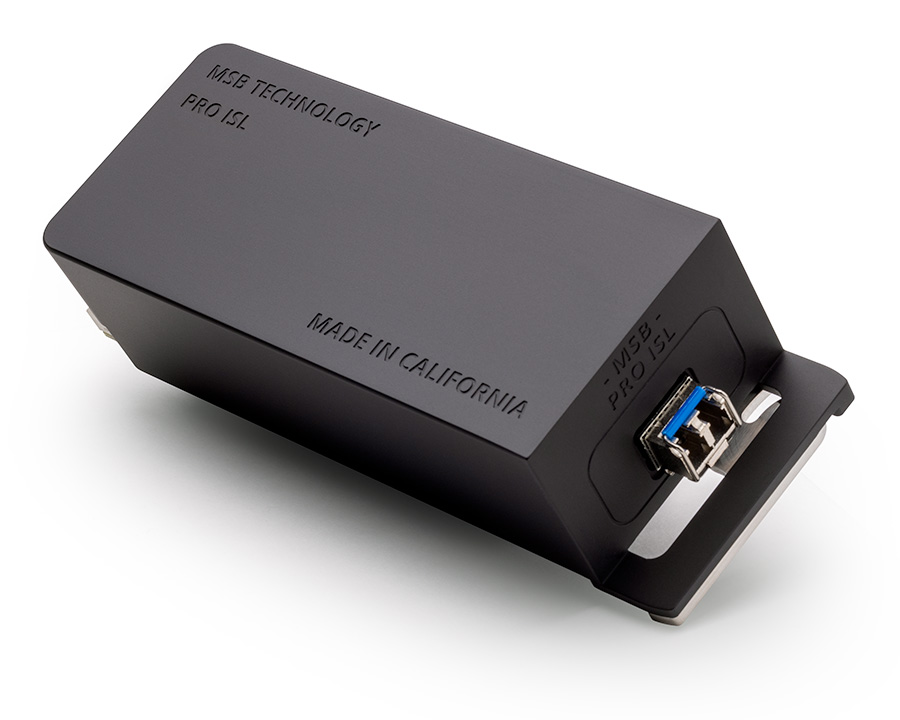
MSB Pro ISL Interface
This interface is the highest performance digital audio interface. The interface is glass fiber optic based, making it 100% electrically isolated and allowing for incredible cable lengths with no loss. The unique protocol allows a very low jitter copy of the DAC master clock to be fed back to the source, creating a low jitter clock synchronous with the audio data system. The audio data is encoded and sent to the DAC, where it’s checked for errors and corrected before playback. The ProISL is capable of multi-channel audio and extremely high sample rates (much higher than any current standard). By using fiber, any noise generated in the source (CPU, drive, video processing, etc…) can be prevented from entering the DAC and the rest of the audio system.
Advantages:
-Synchronous to the DAC
-Offers 100% electrical isolation between source and DAC
-Interface has strong error detection and correction
-Virtually limitless, lossless cable lengths are supported (up to 1km)
-Source device type and capabilities are reported to the DAC (ProUSB, Transport, Etc…)
-Insensitive to ground and noise issues
-Very low jitter
Limitations:
-Offers no software control of the DAC from the source (Volume, etc…)
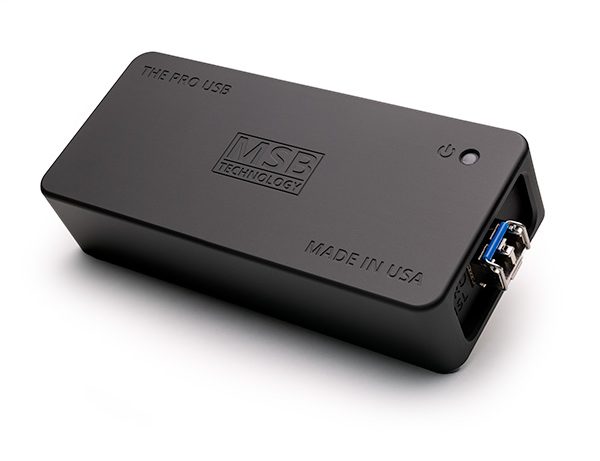
MSB Pro USB Input
The ProUSB solution is the ultimate solution for computer audio playback. It provides the ease of a USB interface in conjunction with 100% electrical isolation, long cable lengths, data protection and the synchronous interface of the MSB ProISL. By using the ProISL interface, the source can be located physically far away from the system and a single fiber cable can connect to the DAC. The advantage of moving the source far away from the system is much lower electrical noise in your listening room.
Advantages:
-Synchronous to the DAC
-Offers 100% electrical isolation between source and DAC
-Works with most music server and computer systems that support USB audio
-Uses the ProISL interface with error correction and detection
-Virtually limitless in cable lengths (up to 1km) between the USB module and the DAC
-Works at rates up to 24/768kHz and 8xDSD (with a PC)
Limitations:
-Offers no software control of the DAC from the source (Volume, etc…)
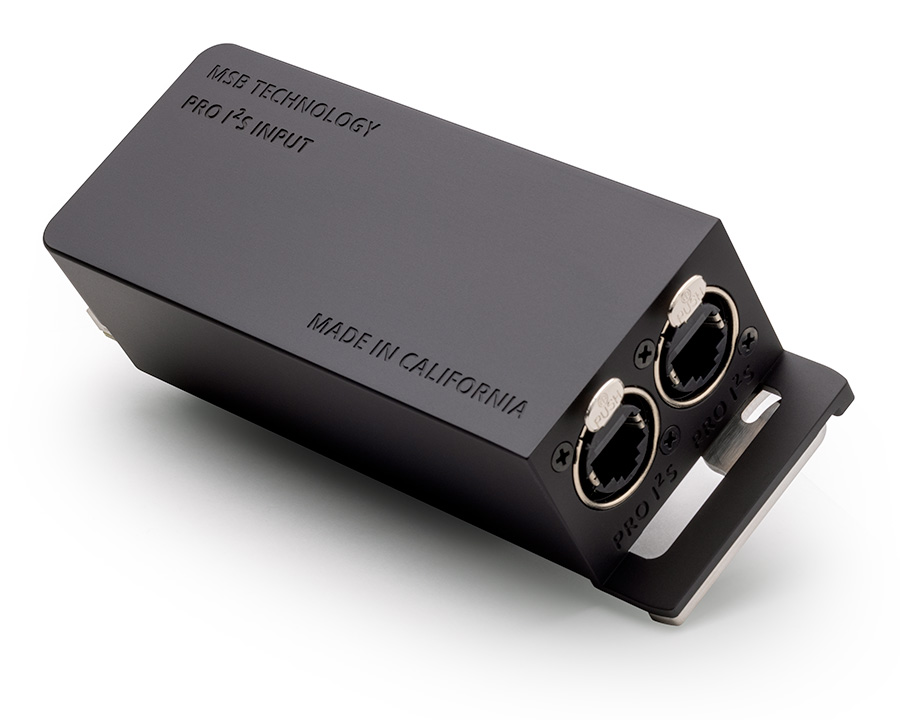
MSB Dual Pro I2S Input
This is our earlier priority interface. We offer this input for legacy products. This interface uses a completely proprietary electrical interface and has no resemblance to common I2S on the cabling. It provides clock feedback and a medium level of isolation between source and DAC.
Advantages:
-Synchronous to the DAC
-Some level of isolation between the DAC and the source
-Low Jitter
Limitations:
-Only a medium level of isolation between the DAC and the source
-Offers no control of the DAC from the host source (Volume, etc…)
-No error detection or correction
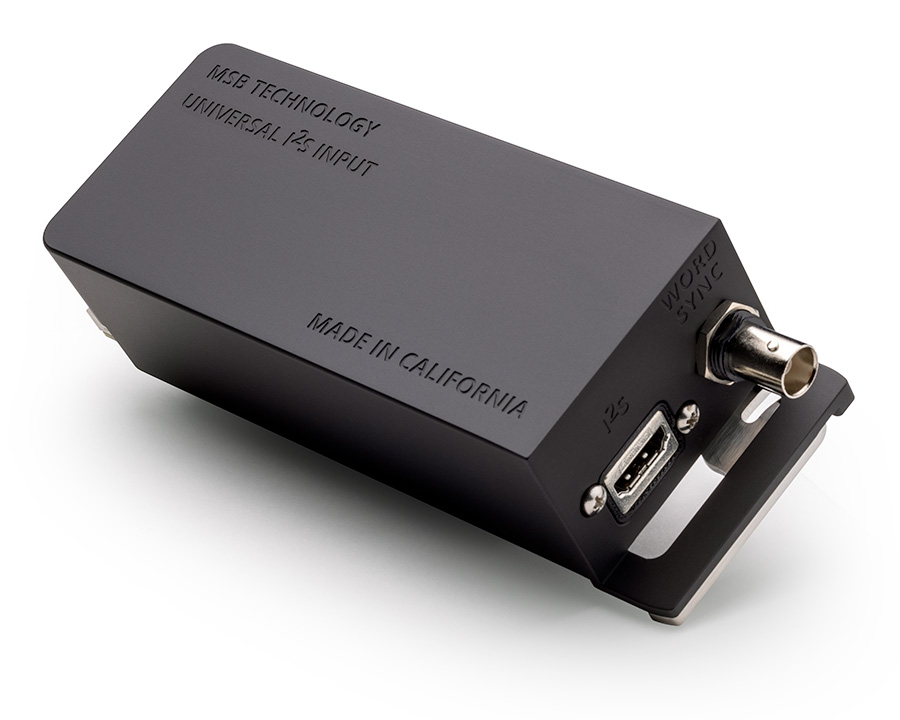
Universal I2S Input
This is the best interface to transfer both DSD and PCM from third party products (such as the PS audio SACD transports) over an HDMI I2S interface. Unlike the majority of other I2S interfaces it includes a galvanic isolation barrier and software configuration. The Universal I2S input is a powerful toolbox of software configurable blocks. These can be configured to accept nearly any I2S implementation and use it to its fullest potential. Each currently supported transport or server will be listed as a menu option in the DAC or Digital Director’s menu with the most current additions here on our website.
Advantages:
-Enables PCM and DSD from third party transports and servers that support HDMI I2S
-Provides an isolated Word Sync for clock feedback
-Provides the best isolation available in any HDMI I2S interface
-Sample Rates to DSD 8X and 768Khz PCM (depending on source)
-New configurations can be added with software updates
Limitations:
-Limited isolation compared to Pro ISL fiber connection
-No error detection or correction
-Shorter cable lengths
-Asynchronous (Unless source supports Word Sync)
-Only 3.3V signaling and LVDS data channels are supported

